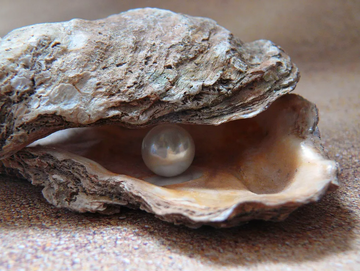A pearl ring: a symbol of elegance, grace, and timeless beauty. But the captivating allure of a pearl is only enhanced by the metal that cradles it. Choosing the right metal for your pearl ring is crucial, impacting not just its aesthetic appeal but also its longevity and how well it protects the delicate gem. So, let’s explore the contenders and discover the best metal to complement your precious pearl.
Why Metal Matters: A Gentle Touch for a Delicate Gem
Unlike diamonds or sapphires, pearls are relatively soft and require gentle handling. The metal you choose should not only be beautiful but also kind to the pearl, minimizing the risk of scratches, abrasions, or chemical reactions. The ideal metal will be:
- Gentle: Non-abrasive and smooth against the pearl’s surface.
- Stable: Resistant to tarnishing or corrosion to prevent chemical reactions.
- Protective: Offering a secure and supportive setting.
The Contenders: Assessing the Best Metals for Pearl Rings
Let’s break down the pros and cons of popular metal choices for pearl rings:
-
Platinum: The Gold Standard
- Pros: Exceptionally durable, hypoallergenic, and tarnish-resistant. Develops a soft patina over time, which is gentler on the pearl than the tarnish of silver. Its cool, white hue beautifully complements white, grey, and black pearls.
- Cons: More expensive than other options.
-
Yellow Gold: Classic Warmth
- Pros: A timeless choice, especially for golden pearls. Generally tarnish-resistant, particularly higher karat alloys (18k).
- Cons: Can be softer than platinum, making it more prone to scratches.
-
White Gold: Modern Elegance (with a caveat)
- Pros: Offers a bright, white hue similar to platinum, often at a lower price point.
- Cons: Requires rhodium plating, which can wear away over time, exposing the base metal (which may contain nickel, a common allergen). The plating process itself can sometimes be harsh on the pearl. Needs replating every 12-18 months, making it require high maintenance.
-
Rose Gold: Romantic Blush
- Pros: Adds a touch of warmth and romance, particularly beautiful with pink or peach-toned pearls. Durable due to its copper content.
- Cons: The copper content can potentially cause a slight reaction in very sensitive skin.
-
Sterling Silver: Budget-Friendly Beauty (with caution)
- Pros: The most affordable option and a bright, reflective metal.
- Cons: Highly prone to tarnishing, requiring frequent cleaning. Tarnish can damage the pearl’s surface. Softer than other metals, making it more susceptible to scratches.
-
Titanium: Modern Sleekness
- Pros: Lightweight, incredibly strong, and hypoallergenic. Offers a sleek, modern aesthetic.
- Cons: Can be difficult to work with, limiting design options. Its darker color can sometimes diminish the pearl’s brilliance.
The Verdict: Platinum Takes the Crown (with considerations)
While personal preference plays a role, platinum emerges as the best overall choice for a pearl ring. Its durability, hypoallergenic properties, and tarnish resistance provide the ideal environment for showcasing and protecting the delicate pearl.
However, the best metal for your pearl ring depends on your budget, style, and skin sensitivity. Consider these factors:
- Budget: If platinum is out of reach, yellow gold is an excellent alternative. Steer clear of sterling silver unless you’re prepared for diligent maintenance.
- Style: Choose a metal that complements the pearl’s color and your personal aesthetic.
- Skin Sensitivity: If you have sensitive skin, platinum or hypoallergenic gold alloys are your best bet.
Ultimately, selecting the right metal is an investment in the long-term beauty and value of your pearl ring. With careful consideration, you can choose a setting that not only enhances the pearl’s allure but also ensures it remains a cherished heirloom for years to come.






